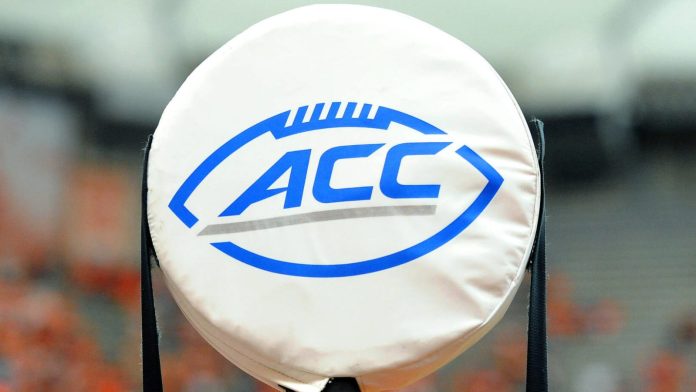.
Byline: Jim Williams, Senior Columnist – Capital Sports
Having covered college sports for over five decades, I have witnessed conferences rise, fall, and reinvent themselves. However, few have the potential for a bright future like the Atlantic Coast Conference (ACC). Despite ongoing speculation about the possible departures of Clemson, Florida State, North Carolina, and Miami, the ACC could be positioned to survive; it’s set to thrive. The league is evolving into the Ivy League of Power Conferences, distinguished by its academic prestige, staying competitive in football while dominating the Olympic sports, and a media presence that spans the nation. In a landscape driven by ratings and realignment, the ACC remains too unique, too strategic, and too valuable to fail.
MUST READS
Exit Fees as a War Chest
If those four football powers leave in 2030, the ACC would receive $75 million per school in exit fees—totaling $300 million. That’s not a loss; it’s a strategic cushion. This revenue can be reinvested to stabilize the conference and fuel its next chapter, carrying it through to the end of its ESPN deal in 2036.
Academic and Institutional Power
The ACC’s strength lies in its academic excellence and research output. The combined endowment value of current and proposed members exceeds $90 billion, dwarfing the Big 12. Schools like Stanford ($36.5B), Duke ($11.6B), Virginia ($9.8B), and Cal ($6.9B) lead the way in federal research funding and innovation.
This isn’t just a sports league—it’s a consortium of elite institutions. The ACC’s identity is rooted in cultivating scholar-athletes, honoring legacy matchups, and building universities that lead in classrooms and stadiums alike.
Strategic Expansion and Media Value
Even without its four biggest football brands, the ACC can maintain competitive media value by adding:
- UConn, Memphis, Tulane, USF: Access to major media markets—New York, Memphis, New Orleans, Tampa.
- Navy and Army (football-only): National prestige, historic rivalries, and patriotic appeal.
- Stanford, Cal, SMU: Academic clout and West Coast reach.
These strategic additions give the ACC a true bi-coastal footprint, extending its reach across more than 30% of U.S. media markets—including Boston, New York, Washington D.C., Atlanta, Dallas, San Francisco, and Miami. Collectively, these regions represent over 120 million people, offering unparalleled exposure and advertising value. Importantly, the incoming schools would waive any media rights revenue for the remaining six years of the current ESPN deal, allowing the ACC to preserve its per-school payouts and maintain financial stability through 2036.
The ACC Is Not the Pac-12
Let’s stop pretending the ACC is on borrowed time. The ESPN deal may end in 2036, but the conference is forward-thinking. With elite brands, rising programs, and a commitment to academics, the ACC isn’t just surviving—it’s redefining what a Power Conference can be. It’s not chasing the SEC’s football obsession or the Big Ten’s media empire. It’s building something smarter, broader, and more sustainable.
The ACC is too big, too smart, and too rooted in excellence to be ignored.
Basketball Royalty, Olympic Dominance
While there will be quality football the ACC basketball remains a goldmine. Duke, Virginia, Syracuse, NC State, and Louisville (if retained) drive elite viewership. UConn adds championship pedigree, while Memphis and Tulane bring strong hoops cultures. Olympic sports? Stanford, Cal, and Virginia dominate nationally.
The Atlantic Coast Conference Revenue Model and Media Rights
The ACC’s viewership-based payout model rewards performance and ratings. Even without FSU, Clemson, UNC, and Miami, schools like Duke, Virginia, and UConn can generate strong media value.
In 2024, the ACC earned $711 million in revenue, with average payouts of $45 million per school. With strategic additions, that figure could remain in the $35–45 million range.
Looking ahead to 2036, the ACC is poised to renegotiate its media rights with leverage. Potential partners include:
- Apple: Tech synergy and global reach.
- Amazon Prime, Peacock, Paramount+, YouTube TV: Streaming giants hungry for exclusive college content.
- Turner Sports, Scripps Sports: National and regional distribution.
Estimated value of a new deal? $1.5–2.2 billion annually.
Notre Dame Is Staying
Notre Dame will continue its unique position as a non-conference member in football while maintaining full ACC membership for its Olympic sports. This arrangement reflects a deeper alignment: the ACC’s commitment to academic excellence and its strong East Coast footprint mirror Notre Dame’s institutional values and national identity. The university’s emphasis on rigorous scholarship, tradition, and broad geographic reach finds a natural partner in the ACC’s blend of elite academics and competitive athletics.
Notre Dame’s football legacy is woven through decades of matchups with ACC schools.
- Navy (93 games): The longest uninterrupted intersectional rivalry in college football.
- Pitt (73 games): A gritty, blue-collar rivalry with plenty of memorable moments.
- Army (53 games): Steeped in wartime history and mutual respect.
- Georgia Tech & Stanford (36 each): Coastal clashes with academic peers.
- Boston College (28 games): The “Holy War” between two Catholic institutions.
- The ACC will remain competitive on the gridiron. Programs like Georgia Tech, Pitt, Syracuse, SMU, and USF are rising. Army and Navy add tradition. And Notre Dame—still a member in all but football—anchors the conference’s legacy and relevance.
The Atlantic Coast Conference: Smarter, Broader, Sustainable
The Big 12’s growth has been reactive. The ACC’s evolution is intentional. It’s building a future rooted in excellence—on and off the field. Even without its biggest football brands, the ACC remains a more stable, valuable, and visionary conference.
This isn’t just survival. It’s reinvention.







